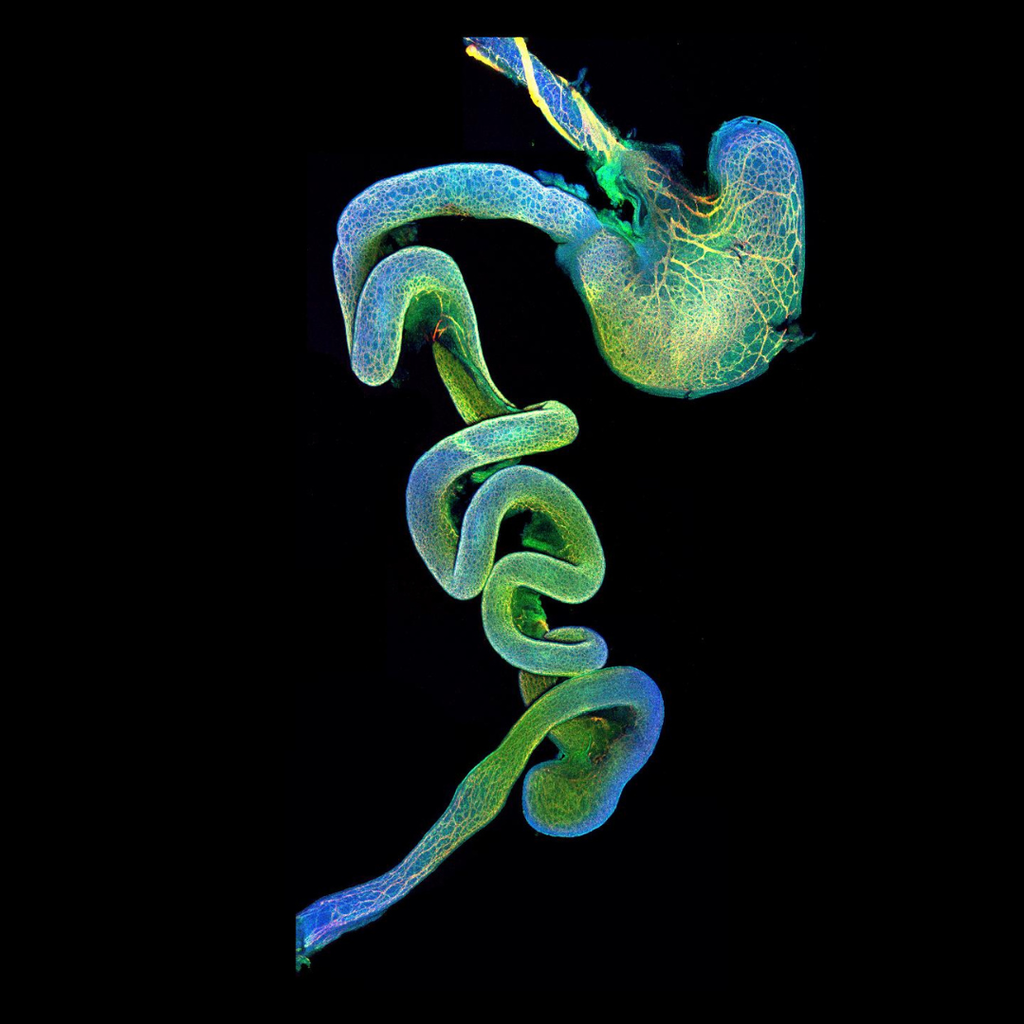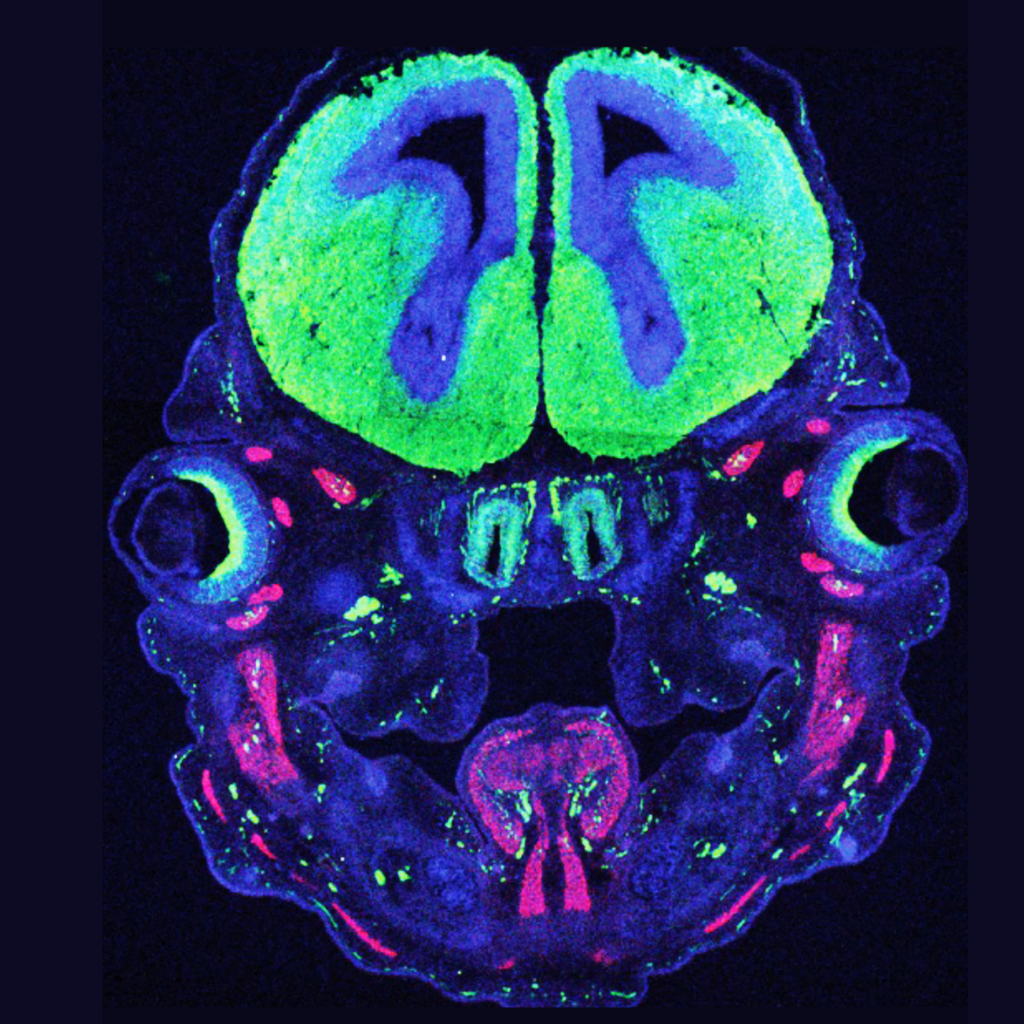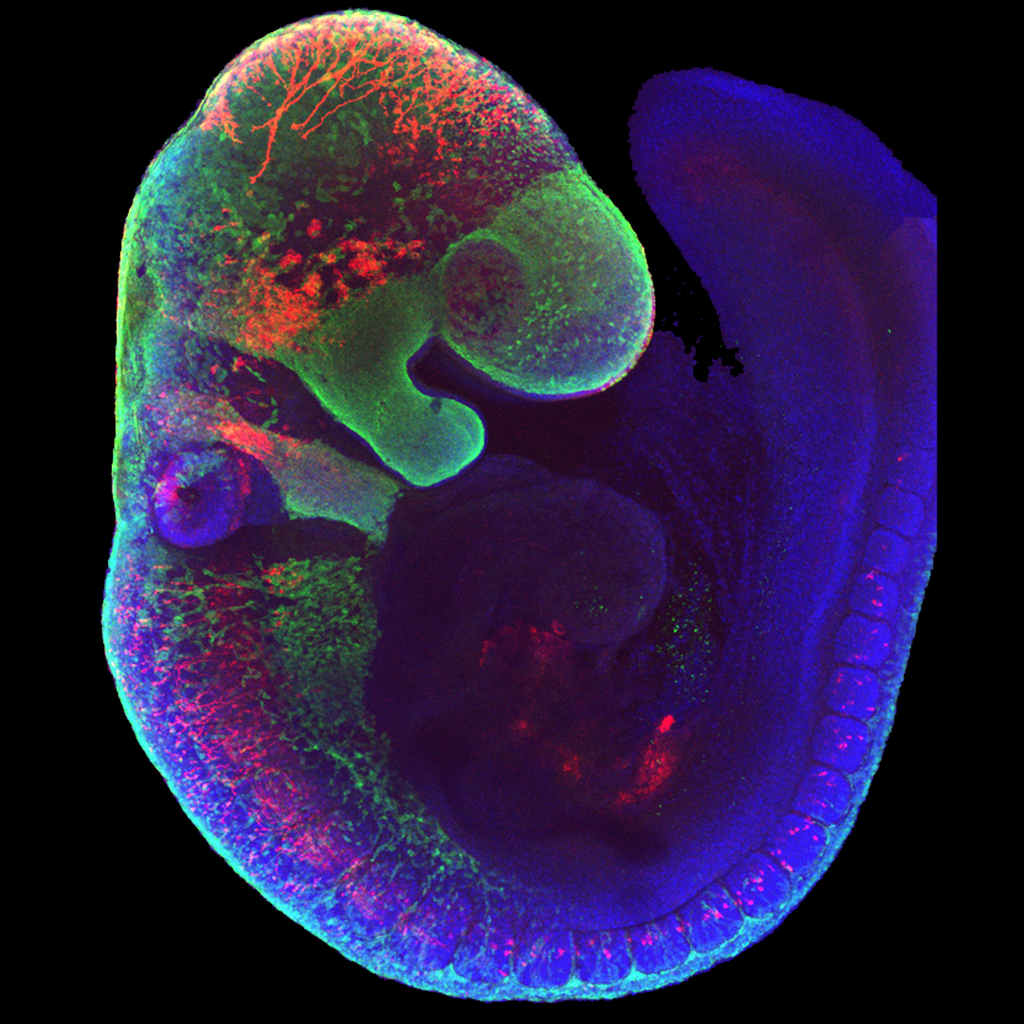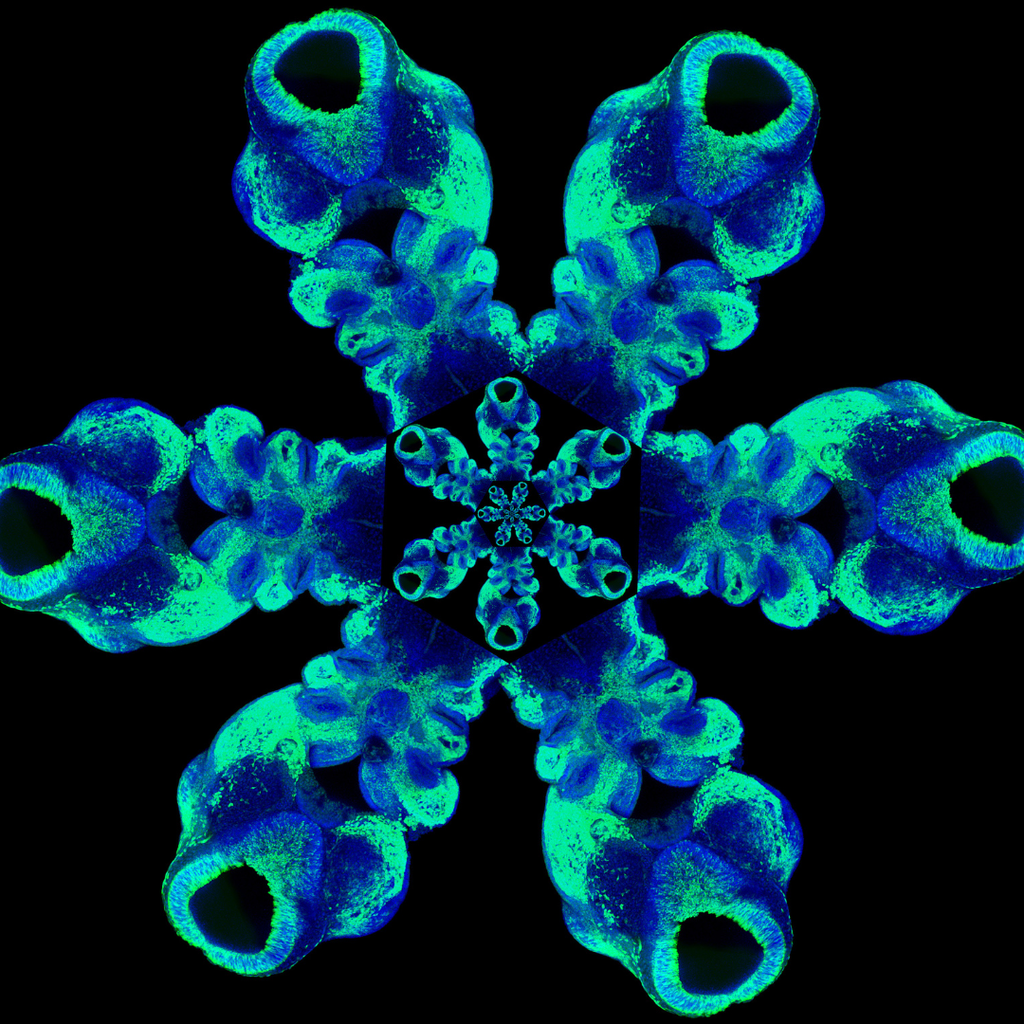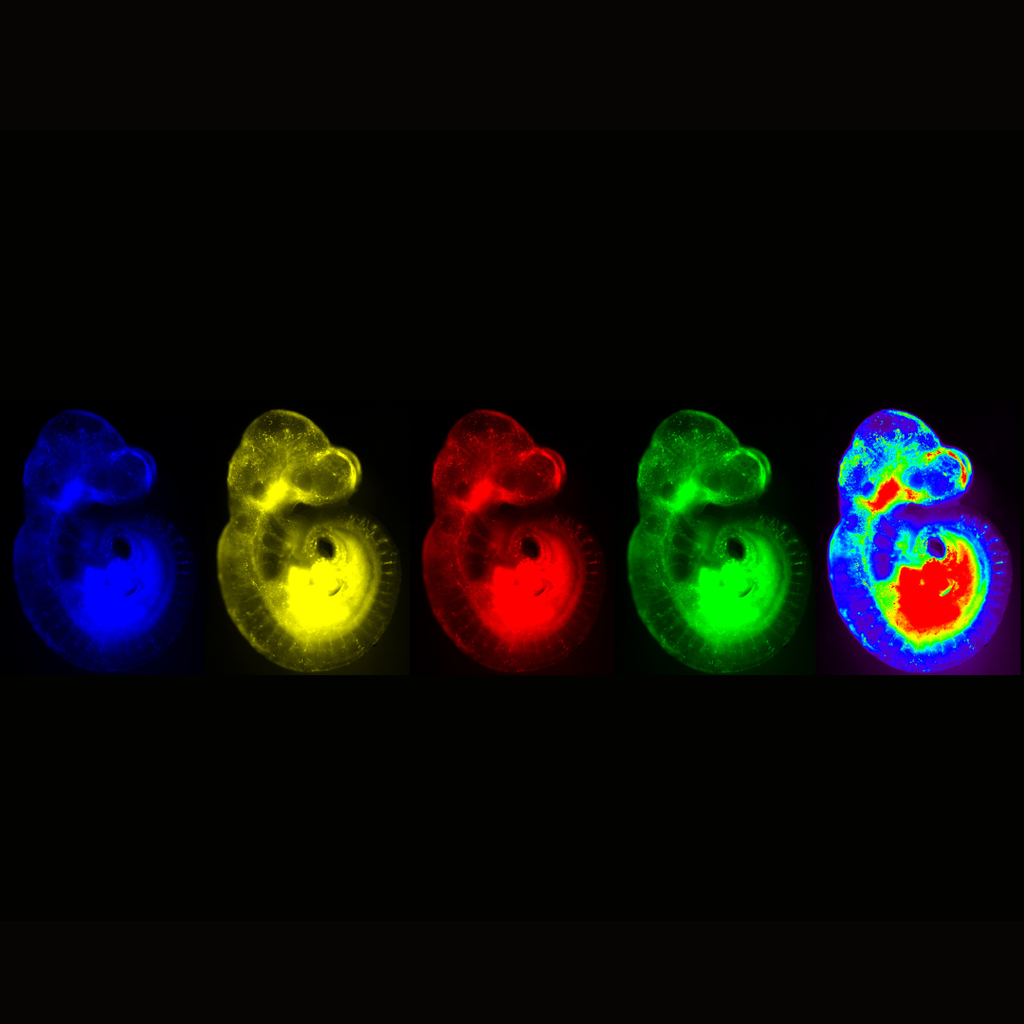Trainor Lab
Trainor Lab
Our focus is on how disruptions in ribosome formation and RNA transcription result in the death of neural crest cells that give rise to development of the head, face, and digestive tract.
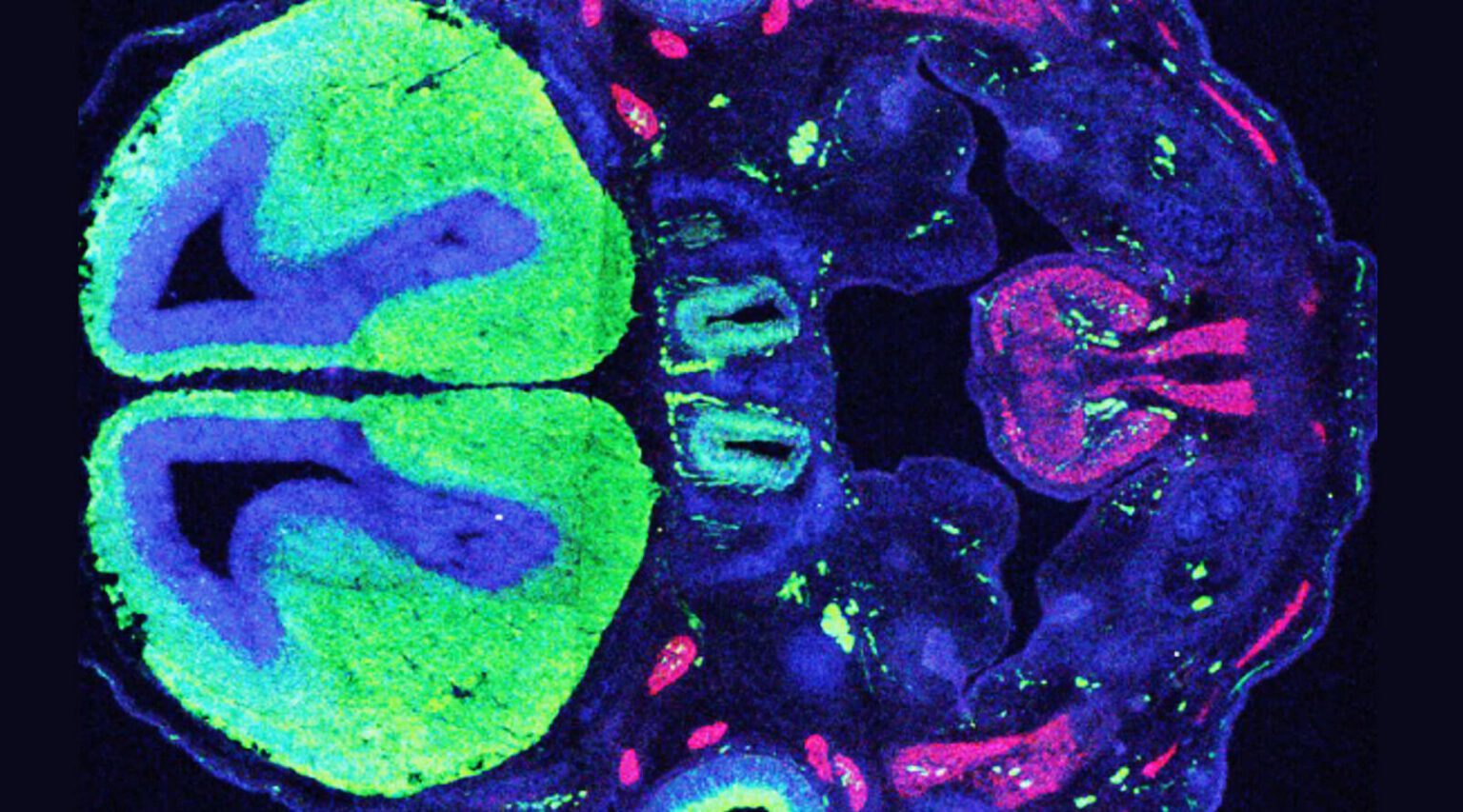
What genetic and cellular mechanisms underlie rare congenital defects?
The Trainor Lab studies neural crest cells, cells which form in early development across research organisms, such as mouse, zebrafish, and chameleons. These cells migrate from the primitive embryonic brain and spinal cord to form the face, heart, and gut. Neural crest cells generate much of the bone, cartilage, and connective tissue of the head and face as well as neurons and glia in the peripheral nervous system.
Abnormalities in neural crest cell development can lead to congenital birth defects including craniofacial anomalies such as Treacher Collins syndrome (TCS), cardiac defects, and gastrointestinal tract malformations such as Hirschsprung’s disease (HD).
The lab has identified many genes and molecular mechanisms important to craniofacial development, primarily focused on TCS. Children with this condition often face years of reconstructive surgery that is never fully corrective.
The Trainor Lab also studies formation of the enteric nervous system which is responsible for gastrointestinal function. They demonstrated that the microenvironment of the embryonic gut is critical for proper formation. The lab additionally investigates the importance of gene-environment interactions in embryo development like genes that metabolize vitamin A, which is essential for proper lip, palate, ear, heart, limb and gastrointestinal development.
The Trainor Lab’s ultimate goal is to determine why specific congenital conditions occur and to identify the genes and the environmental factors or agents that cause them.
